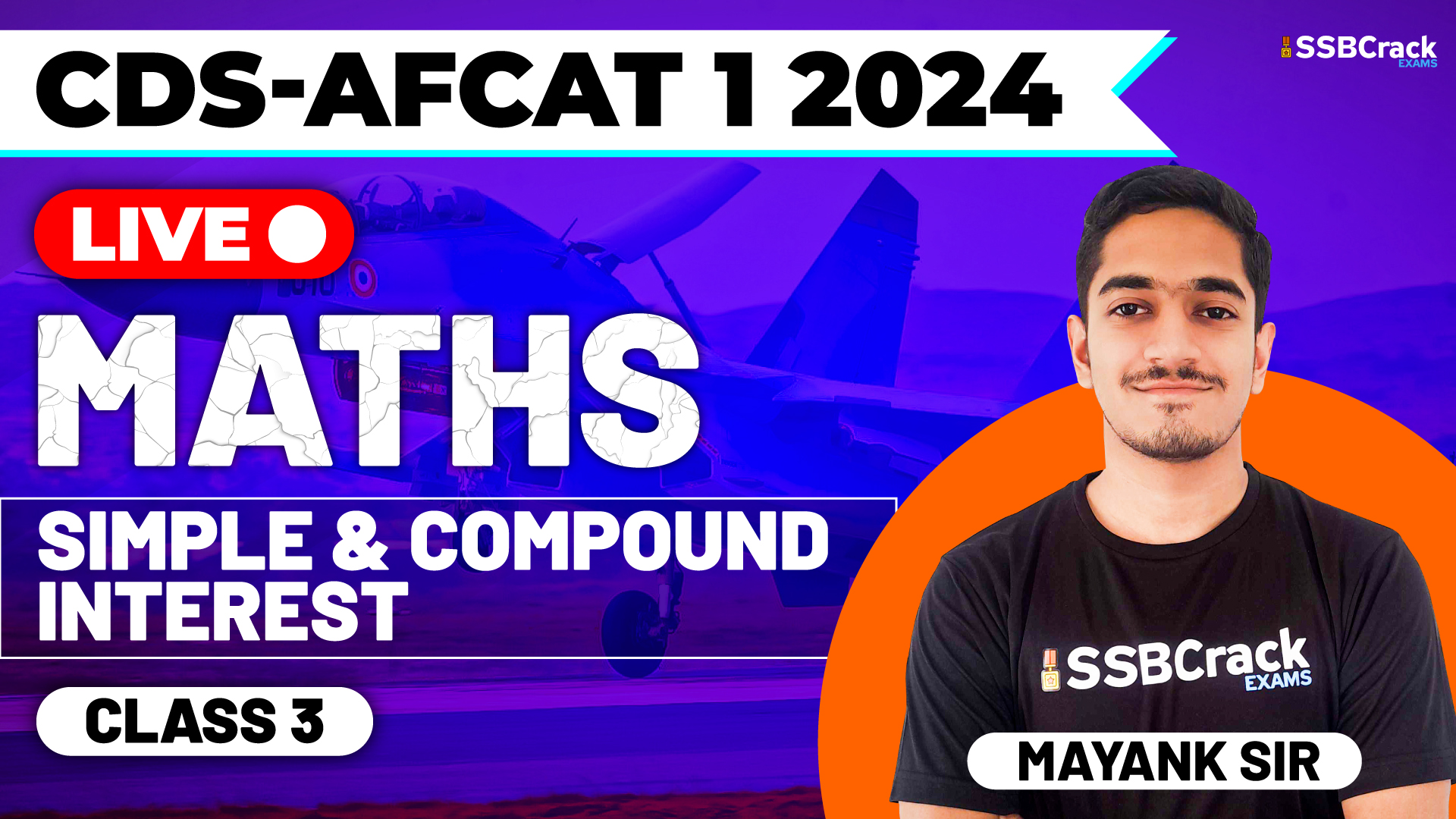In the pursuit of success in competitive exams like the CDS (Combined Defence Services) and AFCAT (Air Force Common Admission Test), a robust grasp of mathematical concepts is non-negotiable. Among these concepts, “Simple and Compound Interest” stands tall as a topic of immense importance. In your recent practice question class, you embarked on a journey into the world of interest, tackling a variety of problems, and honing your problem-solving skills. This blog will provide you with an overview of the key insights and takeaways from your practice class, emphasizing the significance of mastering simple and compound interest for CDS and AFCAT exam success.
Revisiting Simple Interest: The Foundation
Before delving into the complexities of compound interest, it’s crucial to revisit the fundamental concept of simple interest.
Simple Interest Formula:
Simple Interest (SI) = (Principal × Rate × Time) / 100
This formula is the bedrock for calculating the interest earned or paid on a principal amount over a specified period at a given rate. Simple interest typically applies to shorter-term financial transactions.
Key Insights from Your Practice Class
- Efficiency in Problem Solving: Your practice class equipped you with essential formulae and problem-solving techniques that streamline the process of solving simple interest questions. This efficiency is invaluable when tackling time-sensitive questions in competitive exams.
- Real-World Application: Understanding simple interest isn’t just essential for exams; it has practical applications in various financial scenarios, including loans, investments, and savings.
Compound Interest: Unleashing the Power of Compounding
In your practice class, you ventured into the world of compound interest, a concept that goes beyond simple interest by accounting for the cumulative effect of interest on both the principal and previously earned interest.
Compound Interest Formula:
A = P × (1 + (r/n))^(nt)
Where:
- A = The future amount or final value, including both the principal and compound interest.
- P = The principal amount (initial investment or loan amount).
- r = The annual interest rate (expressed as a decimal).
- n = The number of times interest is compounded per year.
- t = The number of years the money is invested or borrowed for.
Key Takeaways from Compound Interest
- Understanding the Power of Compounding: Compound interest illustrates how investments or debts can grow significantly over time due to the compounding effect. This understanding is crucial for financial planning and decision-making.
- Efficient Problem Solving: Your practice class provided you with the tools to tackle compound interest questions efficiently. These formulae and techniques ensure that you can navigate complex scenarios swiftly and accurately.
- Real-World Relevance: Like simple interest, compound interest is not confined to exams but has real-world applications in finance, investments, and banking.
Practical Questions: The Stepping Stones to Mastery
In your practice class, you encountered a diverse set of practical questions that tested your skills in applying simple and compound interest concepts to real-world scenarios. These questions covered a wide range of financial transactions, from investments and savings to loans and debt management. Practicing such questions is essential to build your confidence and competence.
Conclusion
Your practice question class on simple and compound interest in CDS and AFCAT preparation has equipped you with valuable problem-solving skills. Embrace these tools as your allies on your journey to success. As you continue your studies and practice, you’ll find that these techniques become second nature, enabling you to conquer interest-related questions with ease on the day of the exam. So, keep practicing, stay focused, and remember that mastering these fundamentals is the key to excelling in the exams and in real-world financial scenarios. With dedication and practice, you are well on your way to achieving success in the CDS and AFCAT exams. Good luck!



















